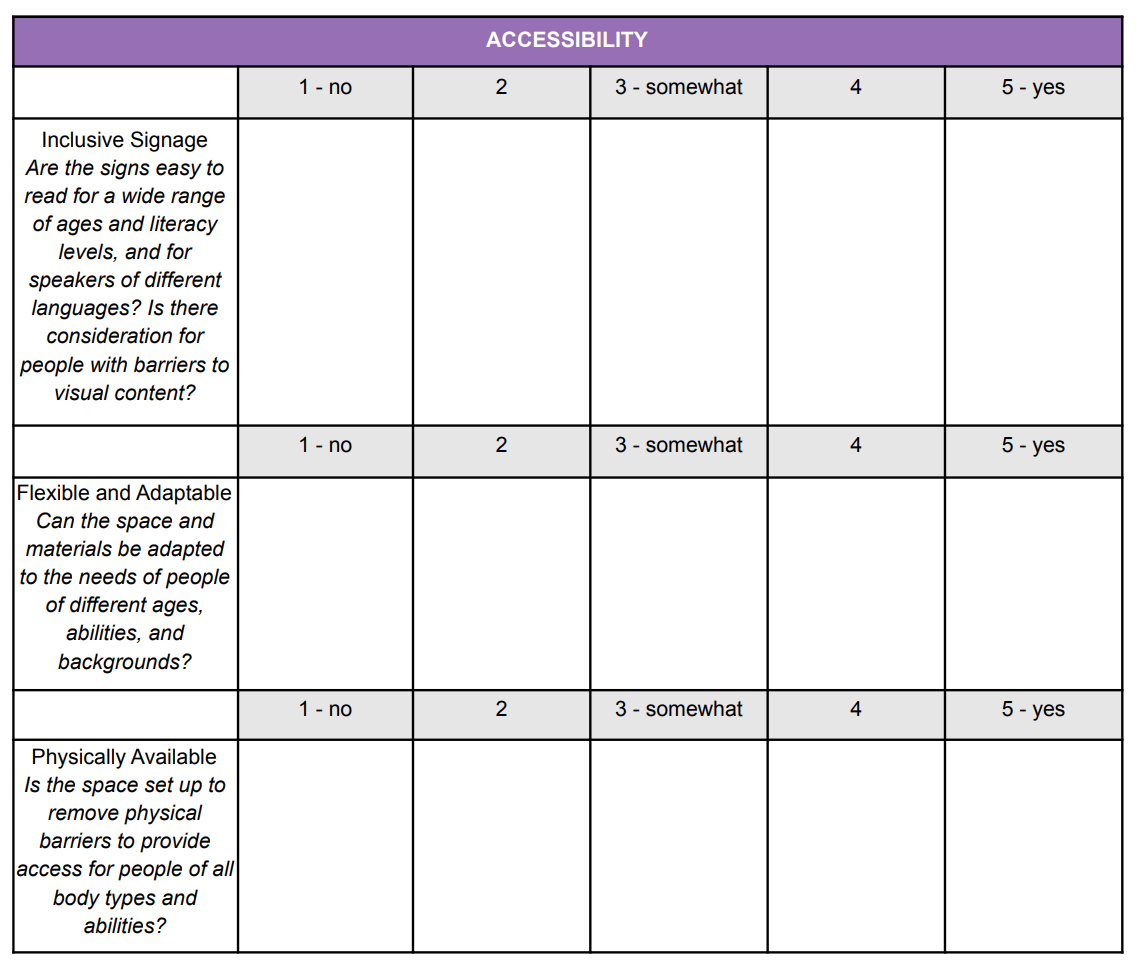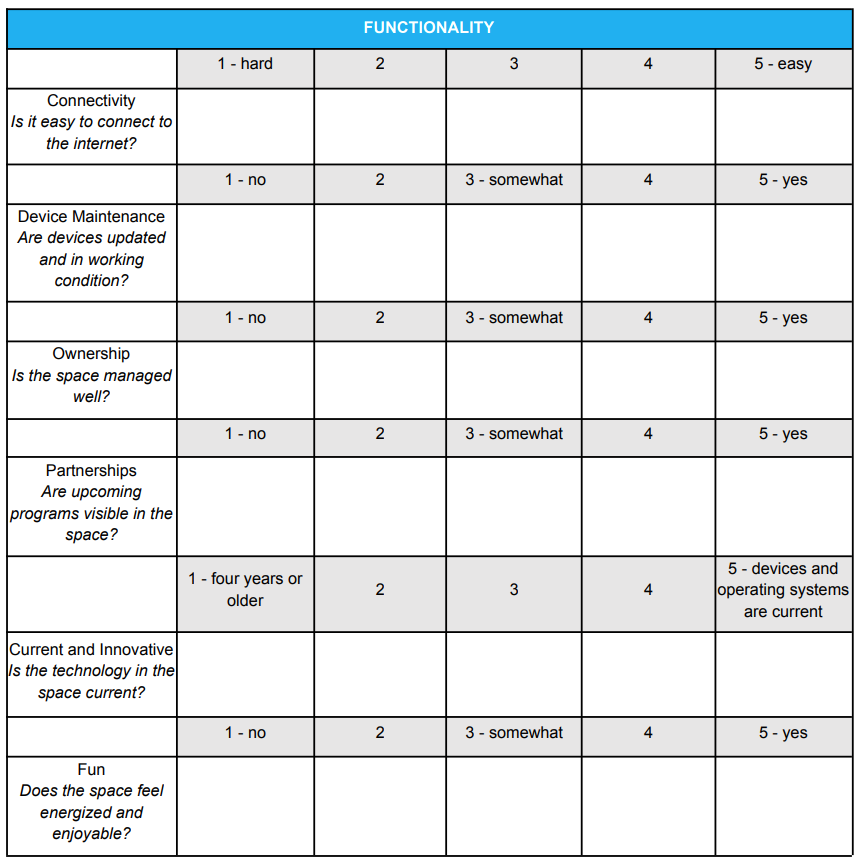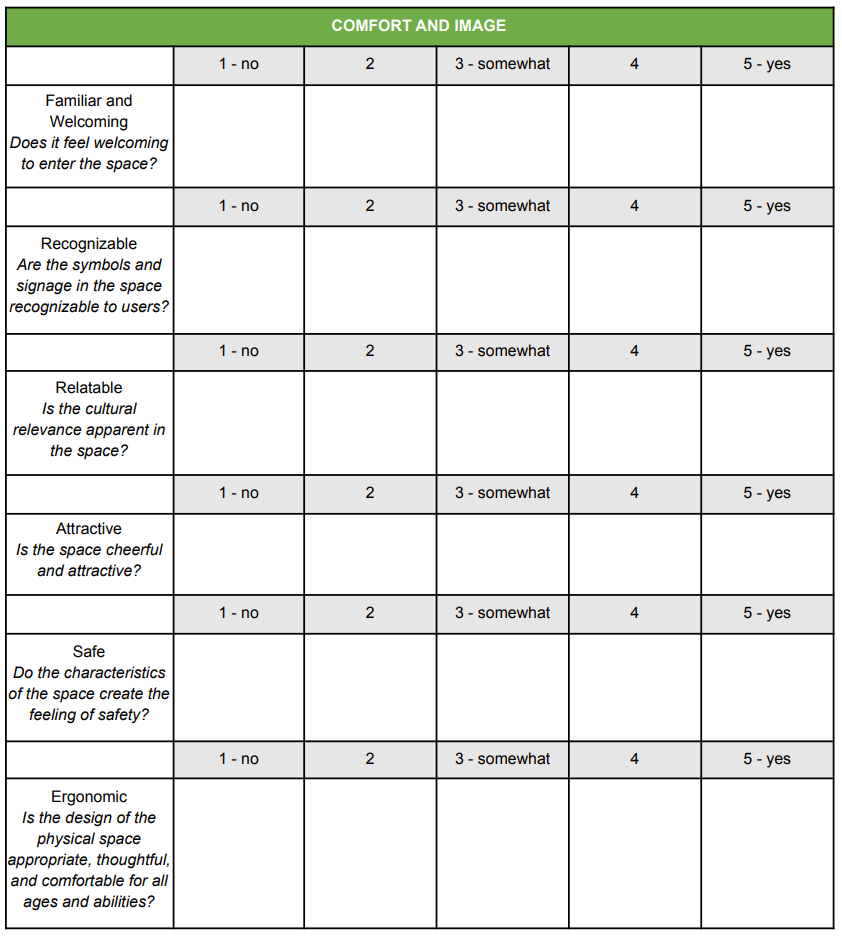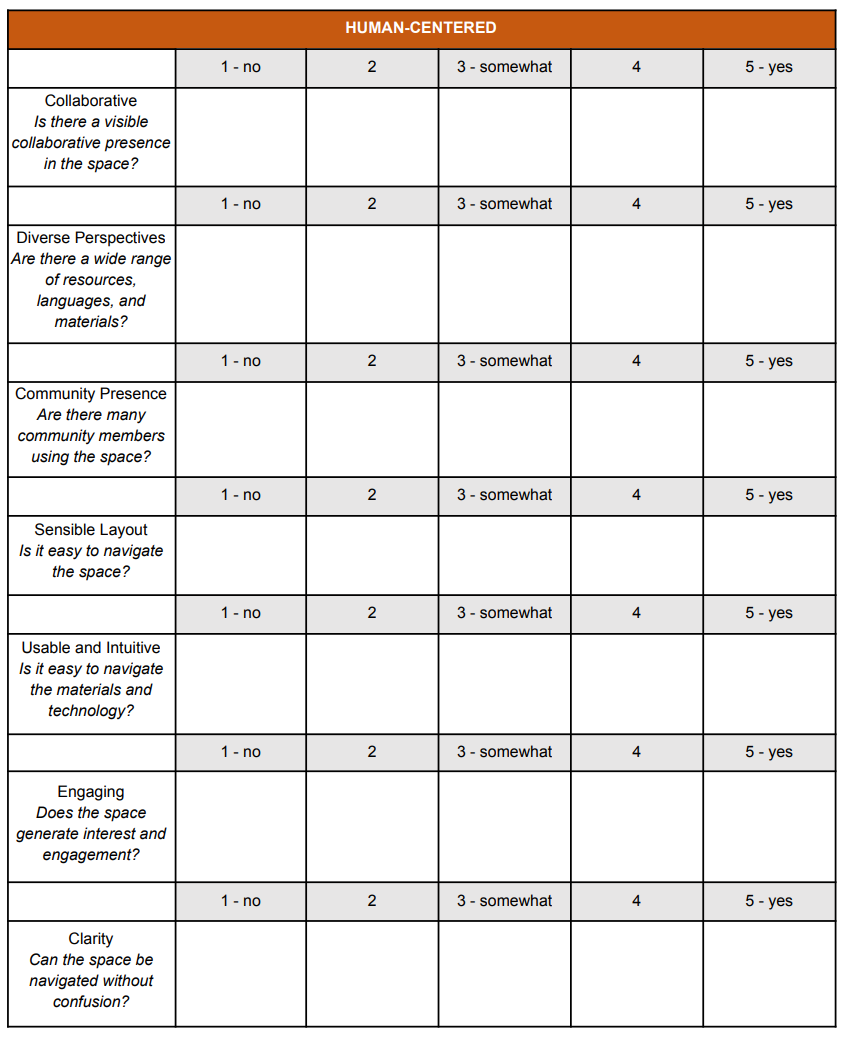How can we improve user experience for the patrons at a wide variety of pop-up literacy and digital access locations?
pop-up library in san antonio, tx laundromat. photo by julia vallera, technology and design manager at libraries without borders us
According to the Project for Public Spaces, placemaking is both an
overarching idea and a hands-on approach for improving a neighborhood,
city, or region which inspires people to collectively reimagine and reinvent
public spaces as the heart of every community.
overarching idea and a hands-on approach for improving a neighborhood,
city, or region which inspires people to collectively reimagine and reinvent
public spaces as the heart of every community.
At Libraries Without Borders US, a placemaking guide is a tool to help improve the user experience in program spaces. It gives the LWB staff members a set of criteria which allow them to assign scores to different aspects of our sites, including
accessibility, functionality, human-centered-ness, and comfort and image.
accessibility, functionality, human-centered-ness, and comfort and image.
criteria for placemaking at libraries without borders us
Placemaking Rubric
Building off of the key placemaking principles at Libraries Without Borders US, a placemaking rubric is developed in order to measure how well project locations align with LWB's user experience goals.
A rubric provides a staff member with a set of criteria which will allow them to assign scores to different aspects of program sites, including accessibility, functionality, human-centered-ness, and comfort and image.




I developed the criteria for the rubric in conjunction with senior staff members at Libraries Without Borders, who contributed their multi-year knowledge of the program spaces and community needs.
methods: DATA COLLECTION AND VISUALIZATION
A radar graph is a visualization of the data collected from a placemaking rubric by a partner at LWB.
Each measure is given a dot on the radar based on the 1-5 score from the rubric, and these dots are connected to form a geometric shape, with a bigger area indicating higher scores. These visualizations provide a quick way to identify areas of improvement, and will allow LWB to see patterns in placemaking scores across multiple WALI sites, as well as to track the progress of placemaking efforts in a single WALI site over time.
example of placemaking assessment for a Wash and learn initiative (WALI) location
IMPACT
Through continued surveying of LWB US project sites, data about key components of placemaking can be aggregated and compared across locations and over time in order to improve the patron experience.
By comparing radar charts, LWB US will be able to provide insights into the strengths and weaknesses of each site and across all of the sites. With this information, the R&D team will be better equipped to provide recommendations to improve the user experience in WALI spaces. Improving these spaces will further LWB US's goal by empowering even more patrons to use the resources they provide.